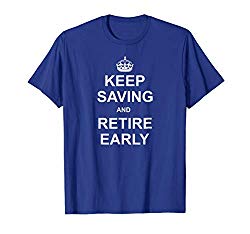What Is The Consumer Price Index And How Is It Changing?
 When reading financial articles you no doubt come across the term CPI very often. CPI stands for the Consumer Price Index, and it’s calculated by the Bureau of Labor Statistics under the U.S. Department of Commerce. They define it on their website as:
When reading financial articles you no doubt come across the term CPI very often. CPI stands for the Consumer Price Index, and it’s calculated by the Bureau of Labor Statistics under the U.S. Department of Commerce. They define it on their website as:
The Consumer Price Index (CPI) is a measure of the average change over time in the prices paid by urban consumers for a market basket of consumer goods and services. Indexes are available for the U.S. and various geographic areas.
The CPI is used to determine annual cost-of-living allowances for Social Security beneficiaries, to adjust the federal income tax system for inflation, and as the yardstick for U.S. Treasury inflation-indexed bonds.
There are variations of the CPI such as the CPI-W but for this post we’ll stick to the main CPI.
Some people confuse the CPI with the general term “cost of living index”. So is it? From the BLS website:
The CPI frequently is called a cost-of-living index, but it differs in important ways from a complete cost-of-living measure. We use a cost-of-living framework in making practical decisions about questions that arise in constructing the CPI. A cost-of-living index is a conceptual measurement goal, however, and not a straightforward alternative to the CPI. A cost-of-living index would measure changes over time in the amount that consumers need to spend to reach a certain utility level or standard of living. Both the CPI and a cost-of-living index would reflect changes in the prices of goods and services, such as food and clothing that are directly purchased in the marketplace; but a complete cost-of-living index would go beyond this role to also take into account changes in other governmental or environmental factors that affect consumers’ well-being. It is very difficult to determine the proper treatment of public goods, such as safety and education, and other broad concerns, such as health, water quality, and crime, that would constitute a complete cost-of-living framework. Since the CPI does not attempt to quantify all the factors that affect the cost-of-living, it is sometimes termed a conditional cost-of-living index.
So as you can see the CPI is not meant to be a complete cost-of-living index.
As this Forbes article details, the CPI has lots of detractors and is held suspect by many as an accurate number to gauge inflation. If you want to read a detailed and nuanced breakdown of why the CPI is controversial, go here.
Since the CPI helps drive the incomes of over 80 million Americans that are derived from federal funds, when the CPI goes up, federal spending for these Americans must keep pace.
As the Forbes article puts it: “If the CPI is low, the less money the government needs to spend on cost of living adjustments, something seniors are astutely aware of.”
So basically Forbes is kind of accusing the government of purposely keeping the CPI low to curb spending. That reeks of a conspiracy theory to me, and I’m not sure I’m buying it, but I realize it’s a possibility.
Ch-Ch-Ch-Changes
 The BLS released a post in December detailing how they’re constantly striving to improve the CPI. As they state, the methodology behind how the CPI is calculated has been updated over the years to reflect the changing economic environment. They state:
The BLS released a post in December detailing how they’re constantly striving to improve the CPI. As they state, the methodology behind how the CPI is calculated has been updated over the years to reflect the changing economic environment. They state:
Today, consumers buy goods and services that weren’t even known a decade ago. And we buy things in many different ways, including from the living room sofa. The growth of e-commerce has created enormous opportunities, but also challenges, for measuring inflation. We continue to work on improvements in response to these developments.
The Forbes article was critical of that methodology because the raw data used to feed it are not available to the public. I am also curious about that methodology since I’ve done quite a few data-driven posts that rely on CPI numbers to drive the analysis.
The blog post mentions a recent Committee on National Statistics panel that investigated three key issues for the CPI methodology. From the post they are:
- How best to incorporate data on transactions?
- How best to integrate other data sources in the indexes for health insurance, owner-occupied housing, and durable goods?
- How to lessen certain types of substitution bias, such as when consumers purchase chicken when the price of steak increases? (Our methods already do a good job accounting for shifts between more similar items, such as between steak and ground beef.)
Being a data person I realize how complex it is to try to get to an accurate CPI. It’s made more difficult because subjective decisions and assumptions have to be injected into the process.
My main hope is that the BLS will be more transparent about their methodology and the raw data that goes into it going forward. For the 80+ million people who rely on the CPI number to drive their income or parts of it, it’s obviously important.
But it’s important for all of us who are trying to measure inflation over time to gauge our standard of living and the true financial pulse of the country.










































you gotta know the inputs, for sure. i see that in manufacturing and six sigma projects. you can put a bunch of well intentioned wrong stuff into your black belt box and make a pretty chart that is way off base. then you implement a fix or improvement and it doesn’t work.
“Lies and statistics”. Yep, that’s why I really want to know their methodology. There’s really no other de-facto inflation measure to use, so most of us who do dorky data stuff about money use it. But it’d be nice to know the secret sauce recipe.
Excellent explanation of CPI and how it differs from the cost of living index! I was unaware exactly how social security was adjusted for inflation which has a big impact on many retired seniors.
Thanks Shannon and stay tuned as I keep tabs on the BLS and will post about any major changes. And thanks for subscribing, I appreciate it!
As someone (I am Canadian lol) very supportive of social programs. I would hope they are being fair and not working the system to keep the CPI low to curb the resources needed to fund these programs. Myself I am hoping we can get UBI (universal basic income) brought into legislation as several parties are pushing for this. As for up here I did a quick check and it looks like we use a similar CPI. When I turn 65 I get OAS (old age security) regardless of income or savings so this is one that will affect me down the road. https://www.canada.ca/en/services/benefits/publicpensions/cpp/old-age-security/oas-price.html
Government conspiracies are rampant in America, I’m not sure if they’re as bad up your way but down here there’s a zillion of them. I’m not sure I buy the premise. And I think it’s funny how Canada calls it “old age security”. I’d be like, “Don’t call me old, I’m insulted!!”
LOL ya, it will be interesting how I feel about that “old age” when I start collecting. I look forward to my government social pension (cpp) and government old age security in my 60s. They will be a great layer of buffer and security to my FIRE stash